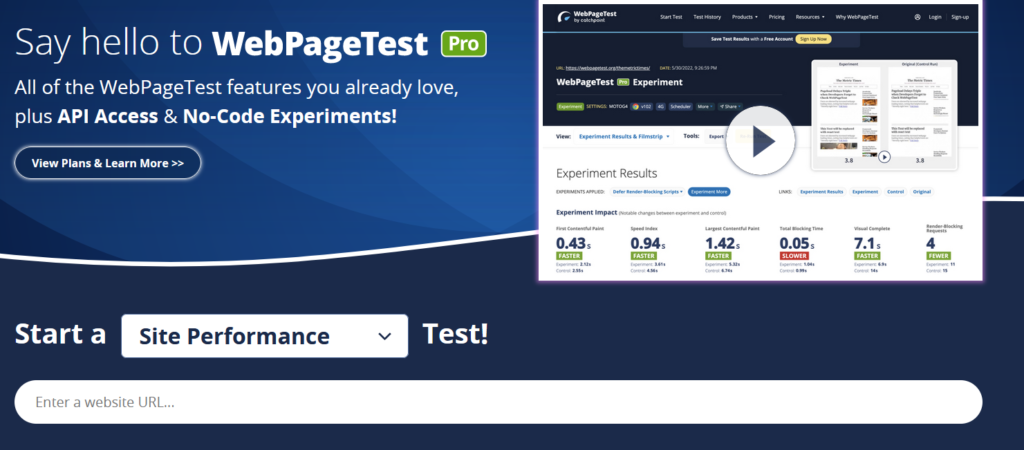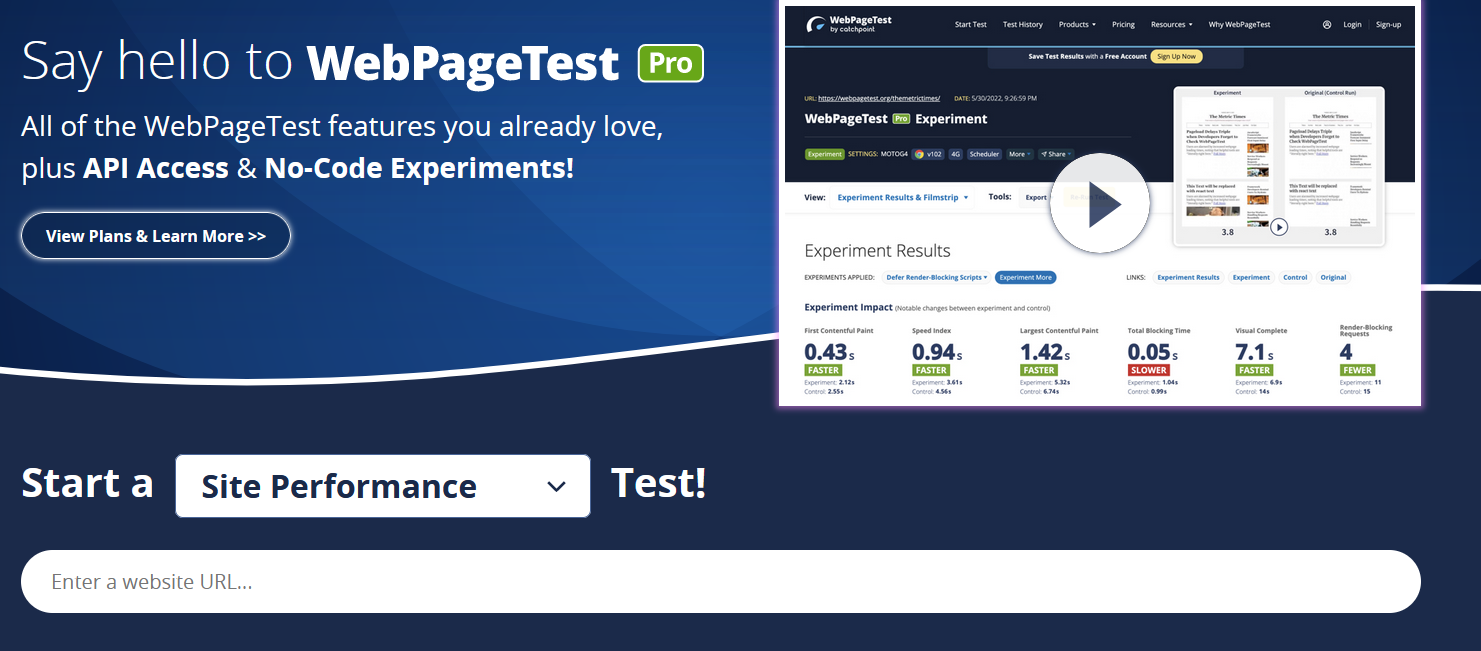Welcome to the fantastic world of mobile-friendly webpages! As more and more people use their smartphones to access websites, it’s crucial to provide an exceptional mobile experience. In fact, Google even considers mobile-friendliness a ranking factor. So, if your site isn’t up to par, you might be missing out on tons of potential traffic. Don’t panic, though! We’re here to help with a list of top tools for testing and analyzing your mobile-friendly webpage.
In this article, we’ll cover a selection of fantastic tools designed to make your life easier and improve your site’s mobile performance. From checking responsiveness to assessing page load times, these tools will give you the insights you need to make necessary adjustments. So, buckle up and get ready to optimize your site for a mobile audience like a pro!
Table of Contents
Toggle1. Google Mobile-Friendly Test

Let’s kick things off with a fan favorite: Google’s Mobile-Friendly Test. It’s no secret that Google is the king of search engines, so it makes sense to start with their own testing tool. What’s more, it’s super easy to use – even for beginners!
To get started, simply visit the Google Mobile-Friendly Test website and enter your site’s URL. In a matter of seconds, the tool will analyze your page and provide you with a straightforward verdict: mobile-friendly or not. Additionally, it offers a list of potential issues to help you pinpoint where you might need to make improvements. These could include problems with text size, viewport configuration, or clickable elements being too close together.
The best part? It’s completely free to use! So, there’s no excuse not to take advantage of this fantastic tool to ensure your site is up to Google’s mobile-friendly standards. Plus, since Google itself provides this tool, you can be confident that it accurately reflects the search engine’s criteria for mobile-friendliness. Now go forth and test your site – your users will thank you!
2. Google PageSpeed Insights

Next up, let’s talk about Google PageSpeed Insights. Speed is crucial when it comes to mobile browsing, as users expect quick-loading pages. With Google PageSpeed Insights, you’ll get the inside scoop on your website’s performance and how to improve it.
To use this free tool, simply enter your website’s URL and hit “Analyze.” In no time, you’ll receive a detailed report on both mobile and desktop performance. You’ll also get a handy score out of 100, allowing you to see at a glance how well your site is doing. But don’t stop there! Dive into the details to uncover specific issues and actionable recommendations.
PageSpeed Insights focuses on several key aspects, such as render-blocking resources, unused CSS, and image optimization. It even provides suggestions for browser caching and server response times. The best part? The tool offers downloadable optimized images, JavaScript, and CSS files, making it easy to implement the recommended changes.
In summary, Google PageSpeed Insights is a must-have in your arsenal for analyzing and improving mobile webpage performance. So, buckle up and get ready to turbocharge your site’s loading speed!
3. BrowserStack
Now, let’s dive into BrowserStack, another fantastic tool for testing mobile-friendliness. With BrowserStack, you can see how your website looks and performs on a variety of devices and browsers. The best part? You don’t need to own every device under the sun to do it!
BrowserStack offers an extensive library of real devices and browsers, giving you the power to test your site on a wide range of platforms. It’s as easy as entering your website’s URL and selecting the desired device and browser combo. In just a few seconds, you’ll get a live, interactive view of your site on that specific device. How cool is that?
While using BrowserStack, be sure to:
- Test critical pages and user flows, like sign-ups and checkouts.
- Verify that images and videos load properly and are easy to navigate.
- Ensure that text is readable and buttons are easily clickable.
Remember, your website’s appearance on different devices can vary, so it’s crucial to cover all your bases. BrowserStack makes it a breeze to test and adapt your site for a seamless mobile experience. So go ahead, give it a whirl, and create a website that looks stunning on any device!
4. GTmetrix

Next up, we have GTmetrix, a powerful tool that’s all about measuring the speed and performance of your website. Let’s face it, nobody likes a slow-loading site, especially on mobile devices. With GTmetrix, you can identify performance bottlenecks and get actionable insights on how to improve your site’s speed.
To start, simply enter your website URL and let GTmetrix do its magic. The tool will generate a detailed report, including your site’s performance scores, fully loaded time, and total page size. It even provides a waterfall chart, showing the loading times for each element on your page.
To make the most of GTmetrix, follow these steps:
- Analyze your site’s performance and identify areas that need improvement.
- Review the specific recommendations provided by GTmetrix to optimize your site.
- Implement changes and retest your site to track progress.
Keep in mind that GTmetrix focuses primarily on desktop performance, but don’t worry, you can still get mobile insights. Simply switch to the Lighthouse tab within your GTmetrix report, and you’ll find mobile performance data, too!
In conclusion, GTmetrix is an excellent tool to help you optimize your site for speed and performance, ensuring a top-notch mobile-friendly experience. Say goodbye to slow-loading pages and hello to happy mobile users!
5. WebPageTest

Now, let’s dive into WebPageTest, another fantastic tool to help you evaluate your site’s performance on mobile devices. Designed for both beginners and experts, WebPageTest offers a treasure trove of data to help you make your website faster and more mobile-friendly. Plus, it’s free to use! Talk about a win-win situation.
To get started, simply enter your website URL, select a test location, and choose a mobile device. In no time, WebPageTest will present you with a comprehensive performance report, including load time, page speed, and a detailed waterfall chart. Additionally, the tool offers visual comparisons, allowing you to see how your site stacks up against competitors.
To make the most of WebPageTest, consider these tips:
- Run multiple tests to get an average result and identify recurring performance issues.
- Pay attention to the suggested optimizations, such as image compression and browser caching.
- Utilize the filmstrip view to see how your site loads visually on mobile devices.
One unique feature of WebPageTest is its ability to test your site from different locations and connection speeds. This is especially helpful if you have a global audience or if you want to optimize for users with slower internet connections.
In summary, WebPageTest is an invaluable tool for analyzing your website’s performance on mobile devices. With its detailed reports and actionable insights, you’ll be well on your way to providing an exceptional mobile experience for your users.
6. Pingdom
Next up on our list of top tools is Pingdom, an easy-to-use and powerful website monitoring service. With Pingdom, you can evaluate your site’s performance, availability, and user experience, ensuring your mobile visitors have a smooth and enjoyable time.
To get started, simply head to Pingdom’s Speed Test page, enter your website URL, and choose a testing location. Within seconds, you’ll receive a detailed report, complete with a performance grade, load time, and page size. Additionally, Pingdom offers suggestions for improving your website’s performance, making it easy to identify and tackle any issues.
Here are a few tips to help you get the most out of Pingdom:
- Regularly test your site to track improvements and catch any new issues that may arise.
- Review the file requests in the waterfall chart to pinpoint bottlenecks and optimize your site’s loading order.
- Keep an eye on your site’s page size and ensure it’s optimized for mobile devices.
Besides its speed test tool, Pingdom also offers a suite of website monitoring services, including uptime monitoring and real user monitoring. These features can help you stay on top of your site’s performance and provide a seamless mobile experience for your users.
In conclusion, Pingdom is an essential tool for anyone looking to improve their website’s performance on mobile devices. With its straightforward interface and actionable insights, you’ll be well-equipped to provide an exceptional mobile experience for your audience.
7. Hotjar
If you’re seeking a tool that provides insights on user behavior and mobile interactions, look no further than Hotjar. This all-in-one analytics and feedback platform helps you understand how users interact with your site, so you can make data-driven decisions and improve the overall mobile experience.
Hotjar’s heatmaps are a game-changer, revealing precisely where users click, scroll, and hover. This valuable information can help you fine-tune your content placement and design to ensure that your mobile audience is fully engaged.
Here are some ways you can leverage Hotjar to optimize your mobile site:
- Analyze heatmaps to identify popular areas of your site and make sure they’re easy to navigate on mobile devices.
- Use session recordings to watch how users interact with your site, uncovering potential pain points or usability issues.
- Create surveys and collect user feedback to gain insights into what your mobile users love or want to see improved.
By employing Hotjar’s robust suite of features, you can gain a deeper understanding of your mobile visitors’ behavior and preferences. This knowledge will empower you to make informed decisions when optimizing your website for mobile users, ensuring they have the best possible experience.
In a nutshell, Hotjar is a powerful tool that helps you bridge the gap between your site’s performance and your users’ needs. With its comprehensive analytics and feedback capabilities, you’ll be better equipped to create a mobile-friendly experience that truly resonates with your audience.
8. Screaming Frog

If you’re aiming to achieve a mobile-friendly website, don’t miss out on the W3C MobileOK Checker. Developed by the World Wide Web Consortium (W3C), this free tool evaluates your site’s mobile-friendliness and offers a detailed report on its performance.
The W3C MobileOK Checker analyzes various aspects of your site, including markup, style sheets, images, and more. By conducting a thorough examination, it identifies areas that need improvement to ensure optimal performance on mobile devices.
Here’s how the W3C MobileOK Checker can help you enhance your site:
- Validate markup and style sheets: The tool checks your site’s code to ensure it adheres to W3C standards, providing better compatibility with different mobile browsers.
- Optimize images: The checker highlights oversized or improperly formatted images that may slow down your site or cause display issues on mobile devices.
- Assess mobile usability: The tool evaluates your site’s usability, pointing out elements that could be problematic for mobile users, such as small text or unresponsive design.
To use the W3C MobileOK Checker, simply enter your website’s URL and let the tool work its magic. Once the analysis is complete, you’ll receive a detailed report outlining areas that need improvement. You can then use these insights to refine your site, ensuring a seamless browsing experience for your mobile audience.
In conclusion, the W3C MobileOK Checker is a valuable resource for optimizing your site’s mobile-friendliness. By pinpointing potential issues and offering actionable suggestions, this tool helps you create a website that caters to the ever-growing population of mobile users.
9. W3C MobileOK Checker
If you’re on a mission to make your website mobile-friendly, the W3C MobileOK Checker should be on your radar. Brought to you by the World Wide Web Consortium (W3C), this nifty tool evaluates your site’s mobile-readiness and delivers a comprehensive report on its performance.
The W3C MobileOK Checker scrutinizes various components of your site, such as markup, style sheets, images, and more. By examining these areas, it pinpoints what needs fine-tuning to ensure smooth sailing on mobile devices.
Let’s explore how the W3C MobileOK Checker can enhance your website:
- Validate markup and style sheets: The tool checks your site’s code for adherence to W3C standards, boosting compatibility with a range of mobile browsers.
- Optimize images: The checker identifies oversized or poorly formatted images that may cause slow loading or display issues on mobile devices.
- Gauge mobile usability: It assesses your site’s usability, flagging potential problems for mobile users, like tiny text or unresponsive design.
To get started with the W3C MobileOK Checker, just input your website’s URL and let the tool do its thing. Once the analysis is done, you’ll receive a detailed report outlining areas for improvement. Armed with these insights, you can refine your site to offer a seamless browsing experience for your mobile audience.
In conclusion, the W3C MobileOK Checker is a valuable ally for optimizing your site’s mobile-friendliness. By identifying potential issues and offering actionable suggestions, this tool helps you create a website that caters to the ever-expanding mobile user base.
Final Thoughts
In a nutshell, optimizing your website for mobile users is no longer optional—it’s a necessity. With the rise of mobile browsing, ensuring that your site is mobile-friendly is crucial for user satisfaction, search engine rankings, and overall success. Thankfully, an arsenal of fantastic tools exists to help you test and analyze your site’s mobile performance.
From Google Mobile-Friendly Test and PageSpeed Insights to BrowserStack, GTmetrix, WebPageTest, Pingdom, Hotjar, and W3C MobileOK Checker, these tools each offer unique features and benefits. By using them in tandem, you can gain a comprehensive understanding of your site’s mobile readiness and identify areas for improvement.
As you venture into the world of mobile optimization, remember that the key is to prioritize user experience. By employing these tools to test, analyze, and fine-tune your site, you’ll be on your way to creating a stellar mobile experience that keeps users engaged and coming back for more. So, dive in, explore these fantastic resources, and watch your mobile-friendly webpage flourish!






